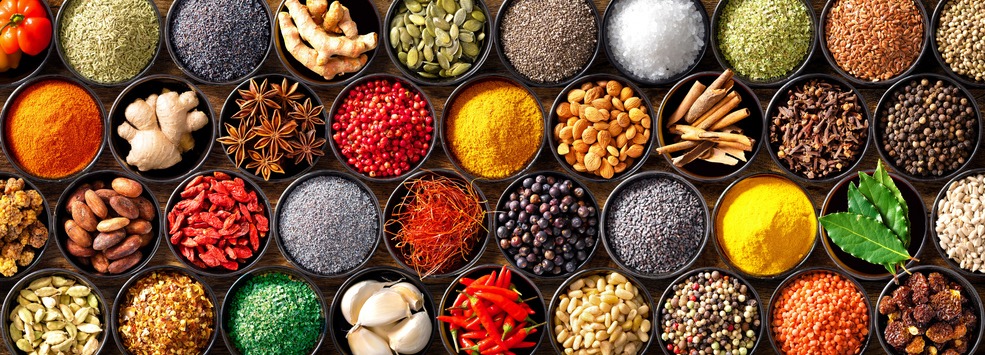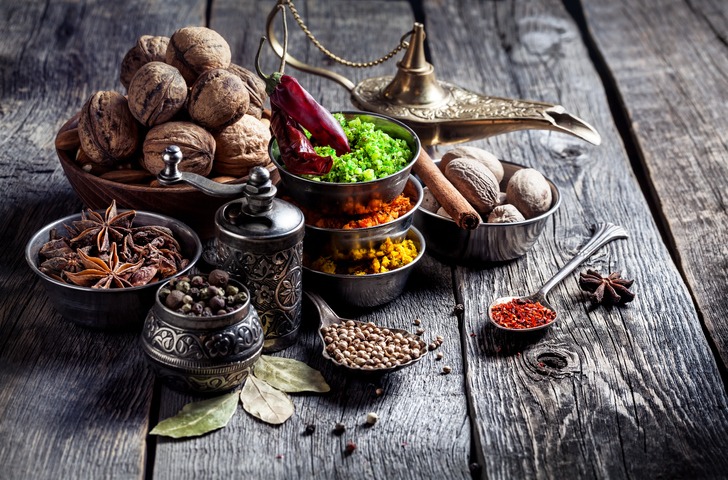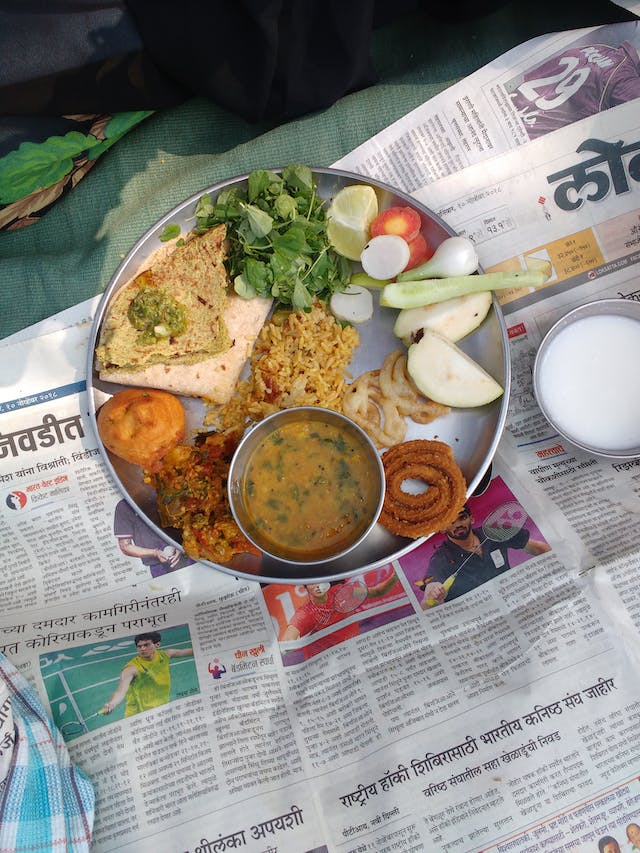Indian cuisine is renowned worldwide for its vibrant flavors and aromatic dishes, a testament to its rich culinary heritage. At the heart of this culinary tradition lies the extensive use of spices, without which no Indian recipe seems complete. From the warming blend of garam masala to individual spices that add depth and complexity, Indian spices have not only conquered kitchens across the globe but also boast a fascinating history and cultural significance. These spices, known for enhancing flavor, texture, and taste, are pivotal in Indian and international cuisines. Beyond their culinary applications, these aromatic treasures carry a wealth of historical importance, tracing back to ancient trade routes and cultural exchanges. Before exploring the rich tapestry of stories and influences behind these spices, we must understand a spice’s myriad benefits.
What is Spice?
A spice is like a magic ingredient that can transform any dish from ordinary to extraordinary. Imagine it as a special touch that adds flavor, aroma, and color to your food.
Spices come from different parts of plants, like seeds, fruits, roots, and even bark. They’re not just about making food taste better; they also have health benefits.
For example, some spices can help you feel better when you’re sick or even make your food safer by killing germs. So, when we talk about spices, we’re talking about these fantastic natural goodies that make our food delicious and can do good things for our health.
The early history of spices
The early history of spices is a fascinating tale that takes us back thousands of years to ancient civilizations across the globe. Before spices were found in nearly every kitchen, they were highly prized for their flavors, medicinal properties, and preservatives.
The story begins as far back as 2000 BCE in ancient Egypt, where spices like cinnamon and black pepper were used in embalming, highlighting their value beyond culinary uses. Egyptians also utilized spices for religious rites and as remedies for various ailments, showcasing their multifaceted importance in ancient societies.
In ancient Mesopotamia, around the same time, spices were being traded and used not just for cooking but also as offerings to gods, illustrating their significance in both daily life and spiritual practices.
The trade routes established for spices laid the foundation for the famous Spice Routes, connecting the East to the West. This network facilitated the exchange of spices, such as cloves, nutmeg, and pepper, from the Far East to markets in Europe and the Middle East. India, known as the land of spices, played a pivotal role in this trade, with its vast array of spices being sought after by traders and explorers.
The demand for spices in Europe drove some of the most significant explorations of the 15th and 16th centuries. Explorers like Vasco da Gama and Christopher Columbus set out to find new routes to the spice-producing regions, ultimately leading to the Age of Discovery and establishing trade routes around the Cape of Good Hope and across the Atlantic to the New World.
Spices were incredibly valuable, often worth more than gold, because they were not just flavor enhancers. They were used as medicines, preservatives, and even as currency. This high value also led to the fiercely competitive spice trade, with nations fighting to control the trade routes and territories where spices were grown.
The early history of spices is a story of culinary delight and adventure, exploration, and the blending of cultures. It shows how these natural treasures were instrumental in shaping the world as we know it today, connecting distant lands through trade, culture, and shared knowledge.
Middle Age History
In the Middle Ages, spices like black pepper, cumin, nutmeg, ginger, cloves, and cinnamon were not just cooking essentials but symbols of luxury in Europe. Due to their high value, these spices were sometimes used as currency. During pandemics, spices and herbs were also thought to have medicinal properties recommended by doctors for various ailments.
An interesting example from this era is the King of Aragon, who invested heavily in importing spices to enhance wine, showing the prestige of these exotic ingredients. Overall, spices during the Middle Ages were much more than flavor enhancers; they were treasures that reflected wealth, had supposed health benefits, and played a central role in the economy and culture.
Early Modern Period
The Middle East was ruling the world spice trade, and Spain and Portugal were trying to find new trade routes to Asia for trading spices and other valuable products. All European countries were trying to control the spice trade and spice-producing countries, which was why Portuguese navigator Vasco da Gama sailed to India in 1499. He was taken aback by the rich Indian pepper market and trade and secured peppers for low prices compared to Venice.
Around the same time, European navigator Christopher Columbus returned from the New World and told the investors that spices were available there. In the 19th Century, as a latecomer, America contributed to the global spice trade, which is still profitable and prosperous today.
Essential Indian Spices and Their Uses
1. Turmeric (Curcuma longa)
- Origin and Description: A bright yellow spice derived from the root of the turmeric plant. It’s known for its earthy and slightly bitter flavor.
- Uses: Widely used for its color and flavor in curries, it also serves as a critical ingredient in marinades and imparts color to rice dishes. Beyond its culinary use, turmeric is celebrated for its anti-inflammatory and antioxidant properties in Ayurvedic medicine.
2. Cumin (Cuminum cyminum)
- Origin and Description: Small, elongated brown seeds with a distinctive warm and earthy flavor, often described as slightly nutty.
- Uses: Essential in spice blends like garam masala and curry powder, cumin is used to season various dishes, including lentils, meats, and soups. It’s also used for tempering, a technique involving the frying of spices to release their flavors.
3. Cardamom (Elettaria cardamomum)
- Origin and Description: Known for its small green pods containing black seeds, cardamom has a sweet, eucalyptus-like flavor.
- Uses: A versatile spice used in both sweet and savory dishes. It’s a key ingredient in masala chai and desserts used in biryanis and other rice dishes. Cardamom is also valued for its digestive properties.
4. Saffron (Crocus sativus)
- Origin and Description: Saffron, the most precious and expensive spice, consists of delicate red stigmas from the crocus flower. It has a unique aroma and a slightly sweet, earthy taste.
- Uses: Primarily used for its color and aroma in dishes like biryani, kheer (rice pudding), and various sweets. Saffron is also used in Ayurvedic remedies for its purported health benefits, including mood enhancement and antioxidant properties.
5. Coriander (Coriandrum sativum)
- Origin and Description: The fresh leaves (cilantro) and dried seeds of the coriander plant are used in Indian cooking. The seeds have a lemony citrus flavor when crushed.
- Uses: Coriander seeds are used whole or ground as a curry spice, while the leaves are used as a garnish or ingredient in chutneys, salads, and dishes like dhania chicken. The seeds are also known for their digestive benefits.
6. Mustard Seeds (Brassica spp.)
- Origin and Description: Small round seeds come in black, brown, and yellow varieties with a spicy and slightly bitter taste.
- Uses: Used for tempering in many Indian dishes, imparting a nutty flavor when fried. Mustard seeds are a staple in South Indian cooking, used in curries and pickles for their preservative qualities.
7. Fenugreek (Trigonella foenum-graecum)
- Origin and Description: Fenugreek leaves and seeds are used in Indian cooking. The seeds are hard, square-shaped, and have a bitter taste.
- Uses: Fenugreek seeds are used in spice mixes and for tempering, adding a distinctive aroma to dishes. Fresh or dried leaves (kasuri methi) flavor curries, dals, and parathas. Fenugreek is also noted for its medicinal properties, including lowering blood sugar levels.
8. Asafoetida (Ferula asafoetida)
- Origin and Description: A resin derived from the roots of the Ferula plants, asafoetida has a strong, pungent smell that mellows into a garlic-onion flavor when cooked.
- Uses: Often used as a digestive aid and to add depth to dishes, especially in Jain and Brahmin cuisines where onion and garlic are traditionally avoided. It’s a common ingredient in dals, curries, and pickles.
9. Cloves (Syzygium aromaticum)
- Origin and Description: Cloves are the aromatic flower buds of a tree in the family Myrtaceae. They have a warm, sweet, and slightly astringent flavor.
- Uses: Used whole or ground, cloves are a vital component in garam masala and are used in rice dishes, curries, and sweets. They also have antiseptic and analgesic properties and are used in Ayurvedic medicine.
10. Red Chili Powder (Capsicum spp.)
- Origin and Description: Made from ground-dried red chilies, this spice ranges from mild to very hot, depending on the type of chili used.
- Uses: A staple in Indian cooking, it provides heat and color to dishes. Various recipes use them in curries, dals, and as a seasoning.
Modern Indian Cuisine and Global Influence
Evolution of Modern Indian Cuisine
Modern Indian cuisine has embraced innovation, with chefs experimenting with traditional recipes to create new dishes that retain the essence of classic flavors while appealing to contemporary tastes. Fusion cuisine, which blends Indian spices and cooking techniques with international ingredients and styles, has become increasingly popular.
There’s a growing trend towards health-conscious eating, with modern Indian cuisine incorporating more plant-based dishes, whole grains, and less oil without compromising flavor. Traditional Ayurvedic principles are also being revisited to create balanced and nutritious meals.
The presentation of Indian food has evolved, focusing on aesthetics, portion control, and the dining experience. Fine dining restaurants and chefs are reimagining Indian dishes in creative ways, elevating the dining experience to match global standards.
Global Influence of Indian Cuisine
Indian cuisine has gained international recognition, with Indian restaurants and food festivals proliferating worldwide. Dishes like butter chicken, biryani, and samosas have become global favorites, showcasing the versatility and appeal of Indian flavors.
The global spread of Indian cuisine has facilitated a cultural exchange, introducing people worldwide to Indian traditions, festivals, and culinary techniques. Cooking classes, food blogs, and travel have further bridged the gap, making Indian cuisine an integral part of global food culture.
The historical spice trade laid the groundwork for India’s global culinary influence. Today, Indian spices are readily available worldwide, enabling home cooks and chefs to experiment with authentic Indian flavors. The global demand for spices like turmeric, known for its health benefits, has surged, reflecting a renewed interest in the nutritional value of Indian spices.
Impact on Global Food Trends
Indian cuisine, with its vast array of vegetarian and vegan dishes, has significantly influenced global food trends. As more people adopt plant-based diets for health and environmental reasons, Indian cuisine offers a rich source of inspiration for flavorful and satisfying meals.
Indian street food has inspired food trucks and casual dining establishments worldwide, making Indian flavors more accessible and informal. Dishes like chaat, pav bhaji, and rolls are enjoyed by a global audience, reflecting a preference for bold and complex flavors.
India has become a destination for culinary tourism, attracting food enthusiasts eager to explore its regional cuisines and cooking traditions. This interest promotes a deeper appreciation for the diversity and richness of Indian cuisine beyond its stereotypical representations.
Challenges and Opportunities
Authenticity vs. Innovation. Balancing authenticity with innovation presents a challenge as Indian cuisine evolves globally. There’s a need to preserve traditional recipes and techniques while embracing creativity and adapting to new contexts.
Sustainability and Ethical Practices. The global popularity of Indian cuisine brings issues of sustainability and ethical practices in spice production, food sourcing, and culinary practices to the forefront. There’s a growing emphasis on organic farming, fair trade, and minimizing food waste.
Conclusion
The history of Indian spices is a vibrant narrative that spans thousands of years, intertwining with the cultural, economic, and medicinal facets of societies worldwide. Today, these spices continue to be celebrated for their distinct flavors, aromas, and health benefits, embodying the spirit of innovation and exchange that has characterized their journey through history. Indian spices, with their deep historical roots and enduring appeal, highlight the profound impact of culinary heritage on the world stage, reminding us of the timeless quest for flavor that transcends boundaries.




